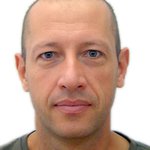
Pierre Bommel
Affiliations Personal homepagehttp://agents.cirad.fr/index.php/pierre.bommel/index
Professional homepage ORCID more infohttps://orcid.org/0000-0002-7776-9075
GitHub more info
I am a modeler scientist at CIRAD. As member of the Green Research Unit, I contribute to promote the Companion Modeling approach (http://www.commod.org). Through the development of CORMAS, a Framework for Agent-Based Models (http://cormas.cirad.fr), I have been focusing on the development and the use of multi-agent simulations for renewable resource management issues. I have been based several years in Brazil, at the University of Brasilia and at the PUC-Rio University, until 2014. I developed models related to environmental management, such as breeding adaptation to drought in the Uruguay or as breeding and deforestation in the Amazon. I am currently based in Costa Rica, firstly at the University of Costa Rica working on adaptation of agriculture and livestock to Climate Changes, and now at CATIE, working on coffe rust.
Research Interests
Participatory modeling, including collective design of model and interactive simulation
Peer reviewed SequiaBasalto model
Marco Janssen Irene Perez Ibarra Pierre Bommel Diego J. Soler-Navarro Alicia Tenza Peral Francisco Dieguez Cameroni | Published Friday, May 26, 2023This is a replication of the SequiaBasalto model, originally built in Cormas by Dieguez Cameroni et al. (2012, 2014, Bommel et al. 2014 and Morales et al. 2015). The model aimed to test various adaptations of livestock producers to the drought phenomenon provoked by climate change. For that purpose, it simulates the behavior of one livestock farm in the Basaltic Region of Uruguay. The model incorporates the price of livestock, fodder and paddocks, as well as the growth of grass as a function of climate and seasons (environmental submodel), the life cycle of animals feeding on the pasture (livestock submodel), and the different strategies used by farmers to manage their livestock (management submodel). The purpose of the model is to analyze to what degree the common management practices used by farmers (i.e., proactive and reactive) to cope with seasonal and interannual climate variations allow to maintain a sustainable livestock production without depleting the natural resources (i.e., pasture). Here, we replicate the environmental and livestock submodel using NetLogo.
One year is 368 days. Seasons change every 92 days. Each day begins with the growth of grass as a function of climate and season. This is followed by updating the live weight of cows according to the grass height of their patch, and grass consumption, which is determined based on the updated live weight. After consumption, cows grow and reproduce, and a new grass height is calculated. Cows then move to the patch with less cows and with the highest grass height. This updated grass height value will be the initial grass height for the next day.
Replication of ECEC model: Environmental Feedback and the Evolution of Cooperation
Pierre Bommel | Published Tuesday, April 05, 2011 | Last modified Saturday, April 27, 2013The model, presented here, is a re-implementation of the Pepper and Smuts’ model : - Pepper, J.W. and B.B. Smuts. 2000. “The evolution of cooperation in an ecological context: an agent-based model”. Pp. 45-76 in T.A. Kohler and G.J. Gumerman, eds. Dynamics of human and primate societies: agent-based modeling of social and spatial processes. Oxford University Press, Oxford. - Pepper, J.W. and B.B. Smuts. 2002. “Assortment through Environmental Feedback”. American Naturalist, 160: 205-213 […]
Under development.

